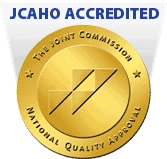What Is the Difference Between Major Depression and Dysthymia?
Everyone feels sad sometimes and may refer to that sadness depression – but sadness and depression are not the same things. Situational sadness is fleeting, it doesn’t interfere with the ability to function normally, and it goes away.
When the sadness doesn’t go away, when it’s ever present and changes the way a person moves through the world, it’s called dysthymia.
What Is Dysthymia?
Dysthymia, or persistent depressive disorder, is chronic depression. It doesn’t come and go; it’s always present and lasts a long time – years, even. People with dysthymia feel depressed for most of the day and during most of the days.
For an adult to be diagnosed with dysthymia, the symptoms must have been present for at least two years. For adolescents and children, the symptoms must have been present for at least one year.
Because it’s ever present, diagnosis can be challenging. The person experiencing it may not recognize that what they experience as normal is abnormal. Other people may not recognize it because it doesn’t look severe from the outside; they may discount it as moodiness, a negative personality, pessimistic or a complainer – someone who sees the glass as half-empty.
Although the symptoms can come and go, and the severity of the symptoms can increase and decrease, in general, they don’t disappear for more than 60 days at a time.
Dysthymia depression symptoms can include:
- Overeating or not eating enough
- Uninterested in daily activities
- Insomnia or sleeping too much
- Low energy or fatigue
- Low self-esteem or highly self-critical
- Difficulty concentrating or making decisions
- Feeling hopeless or helpless
- A decrease in productivity or activity
- Isolating or withdrawing socially
- Anger and irritability
- Feeling sad
- Feeling guilty
There is also a greater risk of other medical conditions, such as heart disease and diabetes. This is because of the physiological changes that occur when the body is in a constant state of stress, and because people with dysthymia are at greater risk of smoking and having an unhealthy diet.
What Is Major Depression?
With major depressive affective disorder, the symptoms are similar to dysthymia, but they are more debilitating and inhibit the ability to function throughout the day. The difference between major depressive disorder and persistent depressive disorder is that people with major depression have a normal mood baseline when they are not experiencing a bout of depression.
Whereas people with dysthymia may not know, or remember, what it feels like to not be depressed, people with major depression generally do. Therefore, people with major depression may seek help sooner. They recognize that they feel abnormal. They remember that they don’t usually feel these things and are more likely to believe that they can feel good again.
Double Depression: For When the Difference Between Major Depression and Dysthymia Shrinks
Major depression and dysthymia are separate disorders, but what is double depression? It is when the two disorders converge. Therefore, treating dysthymia early on can prevent double depression.
When a major depressive episode concludes, without dysthymia, the person’s mood returns to normal. With dysthymia present, when the major depressive episode ends, people go back to their chronic level of depression. Without proper treatment for double depression, they are likely going to return to double depression again.
How Are Depression and Substance Abuse Linked?
Depression and substance abuse are frequently co-occurring disorders. The two disorders reinforce each other. Both disorders impair the ability to:
- Make sound decisions.
- Create and maintain relationships.
- Succeed at work or school.
- Maintain a stable life at home.
Not treating the mental health issue makes the substance abuse issue worse, and not treating the substance abuse issue worsens the mental health. Substance abuse is frequently a product of an underlying mental health disorder. The mental health disorder frequently drives the person to seek ways to numb their feelings, such as through drugs or alcohol.
Asking someone to stop the substance use before they can get help for the mental health disorder is much like asking someone to heal their cancer before giving them chemotherapy.
Depression can be the catalyst for substance abuse through the desire to self-medicate. Substance abuse can cause depression because it alters the normal functioning of the brain. Additionally, because the effects of alcohol, or the withdrawal from it, can mimic the signs of depression, it can be challenging to get the proper dual diagnosis.
The Danger of Not Seeking Dysthymia Help
Depression is a brain disorder. It’s not something you can shake off any more than you can shake off a broken bone or an infection. It’s not something you can’t leave untreated.
According to the National Institute of Mental Health, 7 percent of American adults suffer from major depressive disorder, while 1.5 percent suffer from a dysthymic disorder. The World Health Organization reports that one of the leading causes of disability around the globe is depression.
Despite the number of people who suffer from depression and substance abuse, there is still a social stigma attached that keeps people from reaching out for help. They feel embarrassment or shame, or are afraid of appearing weak. Ironically, it takes a strong person to reach out and get help when they need it. Seeking help is a sign of strength, not weakness.
People with depression alone have about a 10 percent chance of successfully completing a suicide attempt. People with substance abuse alone also have about a 10 percent chance of successfully completing suicide. When the two disorders co-occur, the risk of successfully completing suicide more than doubles to 1 in 4.
Why Is Dual Diagnosis Concurrent Treatment Necessary?
Dual diagnosis concurrent treatment is relatively new. Prior to the 1990s, mental health disorders and addiction disorders were treated separately. This is called sequential treatment. It differs from concurrent treatment in that one form of treatment must take place and be completed before the next treatment can begin.
Parallel, or concurrent treatment, is when both disorders are treated at the same time. Concurrent treatment became more popular as it became apparent that sequential treatment resulted in a higher rate of relapse. In other words: It didn’t work.
QJM: An International Journal of Medicine reports that women who suffer from depression are more than 4 times more likely to develop a dependence on alcohol in conjunction with their depression. Meanwhile, depressed men are nearly 3 times more likely to develop an alcohol dependence.
This is not a rare disorder or a small problem. Millions of American are suffering and not getting the help they need. When they do get help, they are likely to only get help for only half of the problem.
If they enter addiction treatment without addressing the depressive disorder, they are more likely to drop out and more likely to relapse. Dual diagnosis coupled with concurrent treatment is essential for long-lasting recovery.
Assembling the Proper Team for Addiction Recovery
It’s important to know that you can overcome both disorders. You can retake control and create a healthy, happy, fulfilling life. No matter how many times you’ve tried before, it’s not too late to succeed.
Harmony Place’s desire to help individuals and their families rebuild their lives through recovery from these co-occurring disorders is evident thanks to our first-class concurrent treatment program for dual diagnosis.
If you have thoughts of suicide or have attempted suicide, seek help immediately by calling the National Suicide Prevention Lifeline: 1-800-273-8255. Regardless of why you’re depressed or what your symptoms are, you can find available and effective treatment. Above all, remember: You are not alone.
When you are choosing a private residential treatment program, choose the program that focuses on personalized care, luxurious accommodations and has the highest accreditations. Harmony Place offers the full continuum of treatment options, from detox to transitional living, encouraging recovery for a lifetime.
Explore Our Dual Diagnosis Program
Harmony Place is located within the vicinity of Woodland Hills and Los Angeles area. Here at Harmony Place, we know how hard it is to start the road to recovery from drug and alcohol addiction. Our medical team and staff have many years of experience with helping countless of people come off of drug and alcohol addiction while having compassion and patience for those recovering. We have many drug and alcohol treatment services to cater to each individual in regards to their lifestyle and budget. Our inpatient detox center is made to make everyone feel safe and at home, our outpatient detox treatments are for those who cannot take time off from work or family, and we offer dual diagnosis services to cater to any other lifestyles so detoxing is made easier for those wanting to heal from addiction.
Contact us today for further information over our services and see which one fits for you or a loved one. Don’t think you are alone; we are here to help you on your road to recovery.






